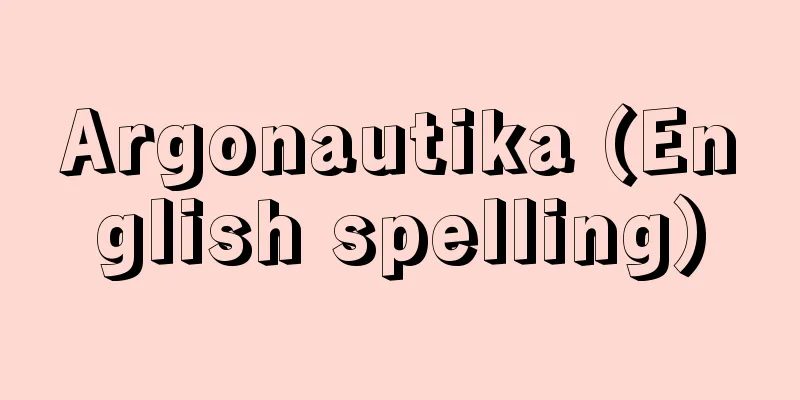Konpeito - Konpeito

|
It is a sugar confectionery among the Nanban sweets, a type of hanging confectionery. It can also be written as kinbeito or kinmochito. The name of the confectionery comes from the Portuguese word confeito. A tiny candy grain is used as the core, and a sugar liquid made by boiling and dissolving rock sugar is sprinkled on it. When it is heated while being stirred, the sugar liquid gradually hardens and grows, and horn-like protrusions form on the spherical surface. The sugar liquid is also colored to make red, yellow, and green konpeito. Konpeito is thought to have been domestically produced during the Jokyo era (1684-1688), about 120 years after it was introduced to Japan. In volume 5 of Ihara Saikaku's Nippon Eitaigura (published in 1688), it is described as "We investigated various mechanisms but it was difficult to succeed" and "It seems that the Nanban people keep good things secret," which shows that the method was very mysterious to the Japanese at the time. It was then written that "In recent years, as the economy has declined, women in Nagasaki have begun making confetti by hand, and now the Kamigata region has followed suit and spread the same way. One sho of sesame seeds can make 200 jin of confetti." At the time, sesame seeds, poppy seeds, cinnamon bark, and other ingredients were used for the seeds. According to Morisada Manko, it was not until after the Bunsei era (1818-1830) that the method of making confetti was introduced to Edo. Confetti was made by people called kakemono craftsmen, and it is said that they could make about 70 kilograms of confetti a day by hand, but today it is a cheap snack. [Fumio Sawa] [Reference item] | |©Shogakukan "> Confetti Source: Shogakukan Encyclopedia Nipponica About Encyclopedia Nipponica Information | Legend |
|
南蛮菓子のなかの砂糖菓子で掛け物の一種。金米糖、金餅糖の字もあてる。菓名はポルトガル語のコンフェイトconfeitoによる。極小の飴粒(あめつぶ)を核にして、これに氷砂糖を煮溶かした糖液をまぶし、かき回しながら加熱すると、糖液は順次固まって大きくなり、球形の表面に角状の突起ができる。糖液に彩色して赤、黄、緑色の金平糖もつくられる。金平糖が国産化したのは渡来から約120年後の貞享(じょうきょう)年間(1684~1688)とみられ、井原西鶴(さいかく)の『日本永代蔵(にっぽんえいたいぐら)』(1688刊)巻5には、「仕掛(しかけ)いろいろせんさくすれども成(なり)がたく」「南蛮人もよきことは秘すと見えたり」などと紹介され、その仕法が当時の日本人にはよほど不思議であったことがわかる。それに続いて「近年下直(げじき)なること、長崎にて女の手わざに仕出し、今は上方(かみがた)にてもこれにならひて弘(ひろ)まりける。胡麻(ごま)一升を種にして、金平糖二百斤になりける」と書かれるまでに普及した。当時は核にごまやケシ粒、肉桂(にっけい)皮などを用いた。『守貞漫稿(もりさだまんこう)』によると、製法が江戸に伝わるのは文政(ぶんせい)(1818~1830)以後のことである。金平糖つくりは掛け物職人といい、手仕事で日に約70キログラムもこしらえたというが、いまは駄菓子である。 [沢 史生] [参照項目] | |©Shogakukan"> 金平糖 出典 小学館 日本大百科全書(ニッポニカ)日本大百科全書(ニッポニカ)について 情報 | 凡例 |
Recommend
Arachniodes amabilis (English spelling)
…[Shigeyuki Mitsuda]. … *Some of the terminology ...
Ritz, C. (English spelling) RitzC
… [history] From the mid-19th century onwards, la...
Epiphronitis
...Interspecific hybridization is rare, but inter...
opsin
…It is also called visual purple. It is a purple-...
Ruditapes decussata (English spelling) Ruditapes decussata
…It is the European clam Ruditapes decussata , wh...
Pre-judicial disposition
When a crime or delinquency is committed, the trad...
caruncle
…These seed coats are usually bright red and are ...
Banquet
〘 noun 〙 ("Ki" means the end of somethin...
Trullo
…The walls are made of thick stone, and arches ar...
Oldham coupling - Oldham coupling
…Fixed shaft couplings include flange-type fixed ...
Kususan (Camphor silkworm) - Kususan (English spelling) Dictyoploca japonica
An insect of the Lepidoptera family, Saturniidae (...
Japanese pond turtle (insect) - Japanese pond turtle
… In Japan, the old name is Hou or Fuu, and it is...
Hilferding
German economist and politician born in Vienna. Ge...
Apatheia (Greek)
Apathy: A state in which a person lives aloof, wit...
Ammonios Sakkas
A mystical philosopher active in Alexandria in the...









